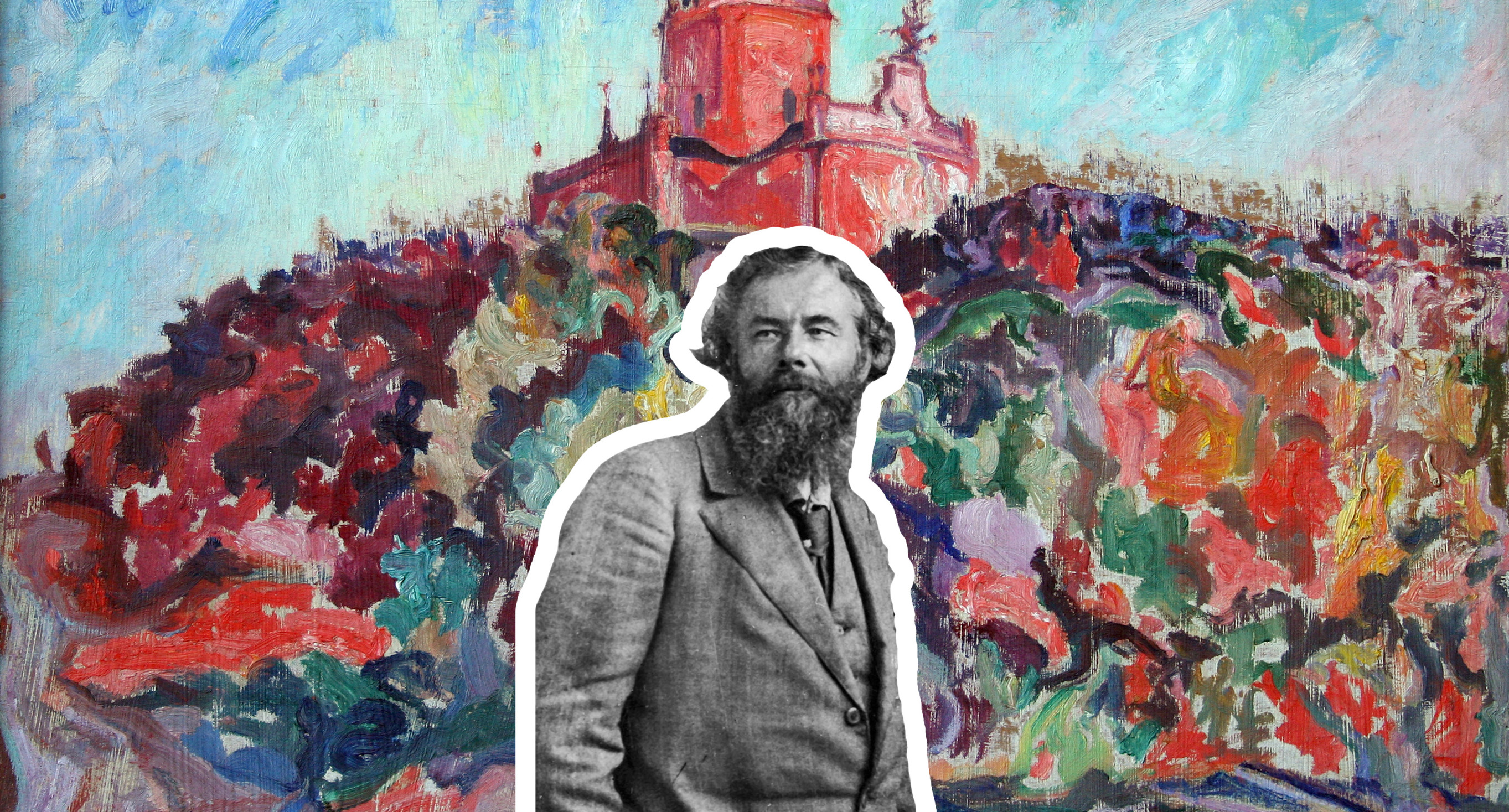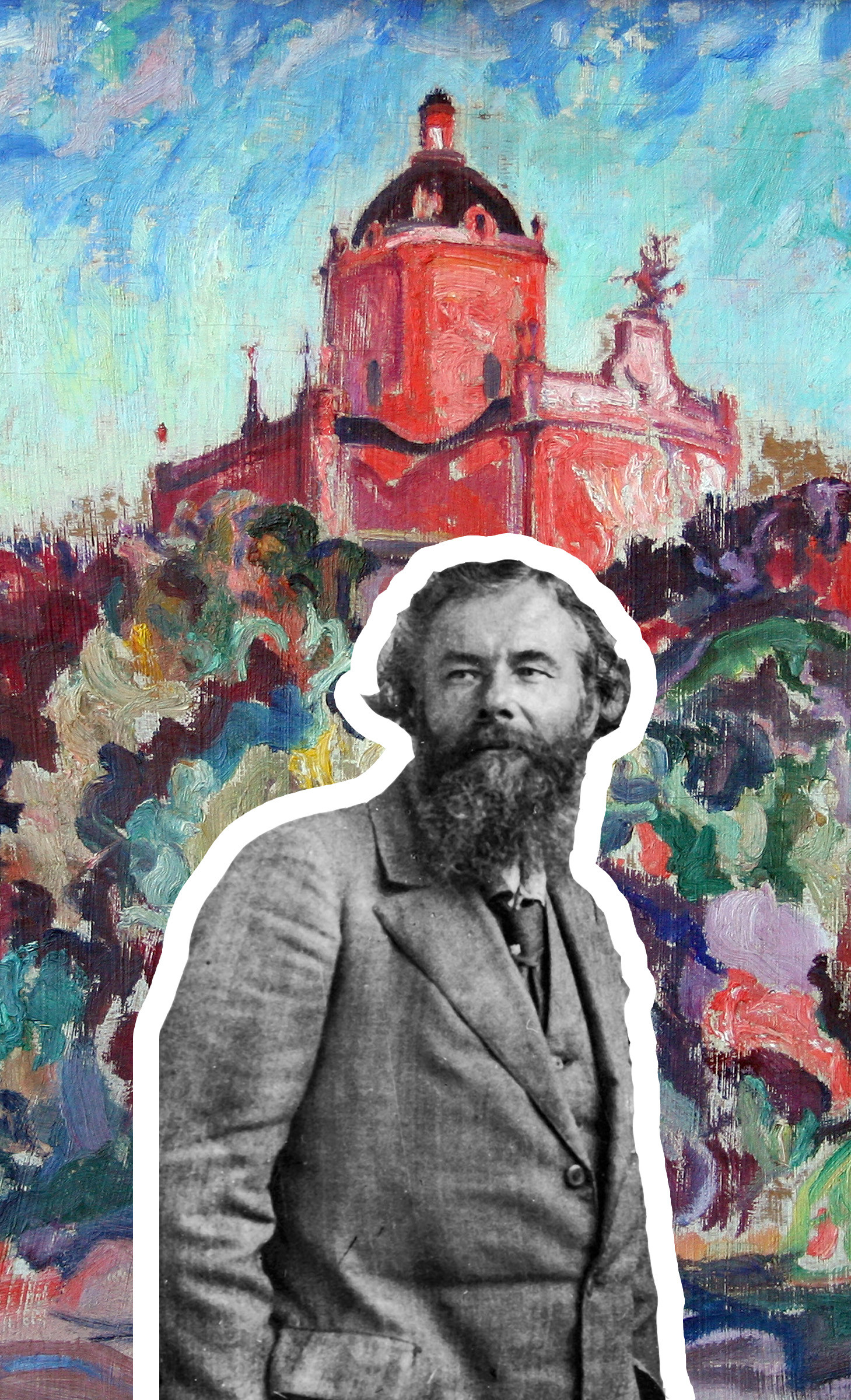
In addition to the fact that in autumn the desire to drink warm tea and wrap yourself in a blanket does not disappear, the feeling of looking for beauty in simple things is sharpened, to surround yourself with aesthetics not only on the outside, but also to fill on the inside.
In search of inspiration and diversification of the usual autumn day, we offer you a journey into the world of expressionism of Oleksa Novakivskyi, and the atmosphere of the villa-museum, where the artist lived and worked, will perfectly complement the impression.
Oleksa Novakivskyi is an iconic figure for Ukrainian painting. After all, not only for Ukrainian, but also for European in general. This is an artist with expressive author's handwriting, which can be recognized in the smallest sketch.
His work was marked by a turning point in the late XIX – early XX century, when artists sought maximum expression and philosophical analysis of complex life phenomena. As a result of these creative searches, the artist has come a long way from Impressionism in the early stages to Symbolism and later to a characteristic feature of his artworks – Expressionism.
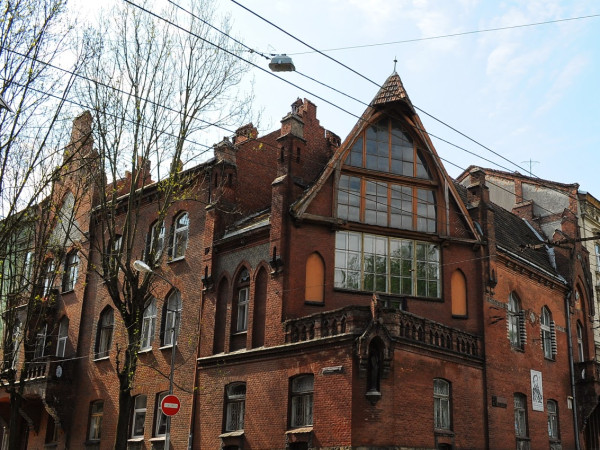
During 1892–1900 (since 1900, the Krakow Academy of Fine Arts) Oleksa Novakivskyi studied at the Krakow School of Fine Arts. The young artist was lucky to study under the guidance of famous artist Jan Matejko. Representatives of Polish symbolism Stanislaw Wyspianski and Jacek Malczewski had a special influence on the formation of O. Novakivskyi as an artist.
In 1911, the artist debuted at the exhibition of the Society of Friends of Fine Arts in Krakow, presenting nearly a hundred of his paintings. This exhibition was visited by Metropolitan Andrei Sheptytskyi and, admiring the artworks of Novakivskyi, the Metropolitan invited artist to Lviv, promising to support him, and later the Metropolitan initiated the founding of the Oleksa Novakivskyi Art School and took the most active part in its activities.
Since 1913, Novakivskyi’s life and work have been connected with Lviv. The artist was able to quickly conquer the Galician public and take one of the central places in the cultural life of Lviv.
10 years later, as an artist, he opened a studio in his workshop, later called the Novakivskyi School. This first Ukrainian art school in Eastern Galicia had a clear national and cultural focus and became an active center of artistic life. From September 1923 to 1925, the school operated as a separate Art faculty of the Ukrainian Underground University.
For almost a decade of existence, more than 90 students have studied at its school. Among them were: L. Getz, S. Gordynskyi, M. Levytskyi, J. Lukavetskyi, A. Maliutsa, M. Moroz, R. Selskyi, G. Smolskyi and many other artists who gained recognition and world fame later. Many of them, fleeing from Bolshevik terror, left Ukraine and emigrated to the United States, Canada and Western Europe, where they were glorified Ukraine with their creative achievements.
Not only artists, but also representatives of the intelligentsia and art critics gathered in the Novakivskyi's school's classrooms.
Poets Bohdan Ihor Antonych, Bohdan Lepkyi, Mykola Voronyi, novelist Vasyl Stefanyk, musicians Vasyl Barvinskyi, Mykola Kolessa, etc. were big supporters of the school and frequent guests in O. Novakivskyi's studio.
The school has become one of the most notable artistic phenomena in the cultural history of Halychyna in the XX century.

The basis of an artist’s work is sacred art. Novakivsky turned to sacred themes throughout his creative life, and he repeatedly worked for churches. There is a very fine line between the sacred and secular painting of Novakivskyi.
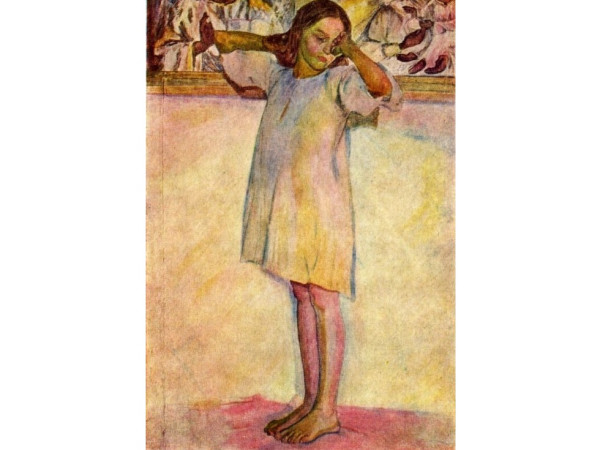

At the same time, Novakivskyi's sacred art includes his works from the Awakening cycle. This topic has repeatedly changed and transformed, gaining a deeper meaning. In particular, the artist explained the works from this series as: awakening of Ukraine, national consciousness, awakening of art, etc. According to the plan, a young girl was to appear on the canvas, and the artist decided to depict the daughter of a widow, from whom he was renting a room when he lived near Krakow, and later this girl became the dream symbol of awakening. The painting was recognized as the best in the artist's artwork heritage! Anna-Maria Palmovska began to appear on canvases more and more often and in a few years she became Novakivskyi's beloved wife.
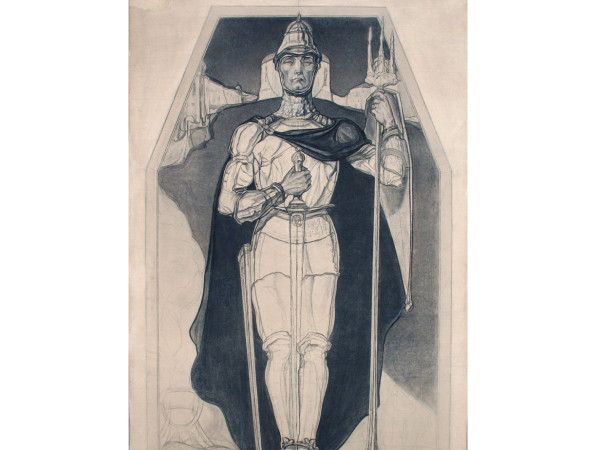
Another important part of the exposition is the portraits of Metropolitan Andrei Sheptytskyi. As is known, Sheptytskyi was an admirer and patron of Novakivskyi, and they were also united by a strong friendship. During this time he made about two dozen paintings and more than 200 sketches and compositional sketches of Metropolitan
Interesting in Oleksa Novakivskyi's work is the theme of understanding the historical past, the idea of which appeared under the influence of the events of the First World War and national liberation struggles. According to the researcher of Oleksa Novakivsky's artworks Liubov Voloshyn, choosing the brightest pages in the history of the people for his works, he usually mythologized them, transforming them into sublime heroic and romantic images that were to "speak" to his contemporaries, awaken the patriotic spirit of the people, remind about its great historical past. At the same time, the artist created more than 70 artworks depicting the princes of Kiev and Galicia, among them: Yaroslav the Wise, Svyatoslav the Conqueror and Yaroslav Osmomysl.
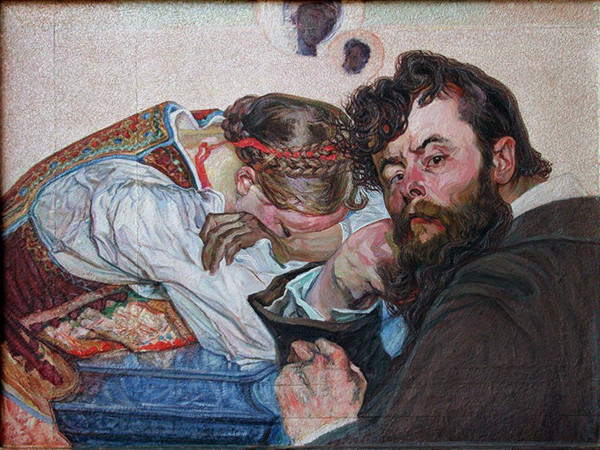
Oleksa Novakivskyi created a gallery of portraits of his famous contemporaries. In these works, his expressive painting is combined with symbolist poetics. The exhibition of memorial museum presents portraits of the late, mature phase of the artist's artworks: "Portrait of Sylvester Golubovskyi", "Portrait of Halyna Holubovska", "Portrait of Oleksandr Barvinskyi".
Self-portraits are another iconic theme in his work. He has an extremely large gallery of picturesque and sketched self-portraits. In addition to exclusively full-scale sketches, he often created allegorical compositions of his self-portraits, such as "Lost Hope", "Depth"; various cartoons. By the way, in some caricature or allegorical self-portraits Novakivsky repeatedly heroized himself, and in others he approached his image very meticulously, mockingly and often created cartoons.
Some of his self-portraits, in particular, "The Artist Against the Background of the Second World War", testify to him as a visionary artist who felt the mood of the time and foresaw the coming of the Second World War.
Novakivskyi belongs to a cohort of talented portrait painters. A special niche was occupied by portraits of his wife Anna-Maria Palmovskaya, which he also painted all his life: from the works of the series "Awakening" to death. At the same time, portraits of his wife often complemented allegorical compositions of his self-portraits or other works, such as the work "Embroidery".
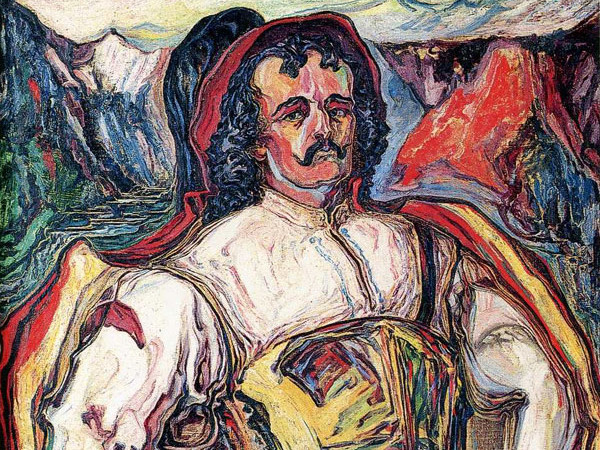
Oleksa Novakivsky's artworks was an important milestone on the way to the development of both Western Ukrainian painting and all national fine arts. He harmoniously managed to demonstrate new trends that were characteristic of the art of the turn of the XIX-XX centuries: the disclosure of in-depth philosophical thinking in figurative and emphatically expressive form.
We can talk about Novakivskyi's skill and creativity indefinitely, we hope we managed to inspire you to a deeper acquaintance with the artist in the walls of the Oleksa Novakivskyi Art Memorial Museum, which was opened in March 1972 on the occasion of the celebration of UNESCO's 100th anniversary of the artist's birth, and from now on for one amazed art connoisseur near the canvas "Azaleas" or "Dovbush – the Lord of the Mountains" will become more.
Follow us Facebook, Instagram, Telegram.
